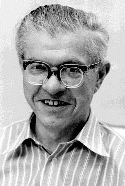

In 1963, a typical computer centre had a large mainframe computer with a Data Preparation Group, an Operations Group and a Programming Group and a team of Engineers provided by the computer manufacturers. So did the Atlas Computer Laboratory. Jack, however felt strongly that there should also be a Group of Fellows who would explore the use of computers in their own discipline. With some difficulty he convinced the appropriate people that this should be so and an agreement was reached with some Oxford Colleges that joint Fellowships should be established and so it was that Jack Good, Ian Grant and Joan Walsh joined us as the first holders of the Trinity, Pembroke and St Hilda's Fellowships. I addition a special relationship was established with St Cross and in due course, after staff at the Laboratory had written a multi-access system, an on-line terminal was placed there and Alan Jones began using Atlas for his linguistic studies.

Initially the Laboratory was to provide a service for Harwell, the Rutherford Laboratory and the Universities and Research Councils. Research was the primary objective: teaching and administration was not included.
Considerable missionary work was necessary. Many universities were suspicious that if they used the Atlas Laboratory facilities they would be denied enhancement of their local computers. The Universities had a mixture of machines, programming languages and operating systems. People had very strong views on all of these. There were people who would only use Fortran, others would only use Algol or Mercury Autocode; some hated punched cards, others hated paper tape. On one missionary visit I remember Jack asked a distinguished academic about his data and he replied that Unfortunately some of it is on cards and then, after a pause he said Excuse me while I go and wash out my mouth after saying that hateful word! He then left the room but whether it was in order to wash out his mouth or for some other purpose we didn't know. On another occasion, in Jack's office, we were talking to a representative of NERC about their bore hole data, some of which was 150 years old. Jack asked what form the data was in? The NERC man looked puzzled so Jack asked Is it on cards, for example? Oh Yes was the reply. Sadly it turned out that he meant that it was written on cardboard! This was an early example of what later became known as a Database.
Some users needed no encouragement. The Met Office were major users from the first and so was Fred Hoyle with his studies on the development of star clusters. When we visited him in Cambridge to discuss his needs he said that he was working on the N-Body problem. Jack asked What is the size of N? Fred replied Well it can be 3 or about 100 or about 1,000,000,000, explaining that 3 different programs were involved. He was particularly pleased that he wouldn't have to pay for using the machine I like the sound of this!). Since each run initially took 35 minutes it was perhaps as well. The Programming Group at the Laboratory did not normally become involved in the application programs of the users, our job was mainly to provide the compilers and other systems programs that everyone needed but we made an exception in this case. Analysis of the runs revealed that over 95% of the time was spent in an inner loop which the Programming Group recoded in Machine Code thereby cutting the running time by a factor of 7.

During discussions with visitors, something that Jack felt was a vital part of his job and which he enjoyed very much, it became apparent that numbers of Universities were writing programs to do the same thing such as X-Ray 63 from the USA, if they were available or to get them written if they were not: COCOA (Counting and Concordance program On Atlas), the textual analysis program, being a particular example of an in-house package that subsequently became widely used.
Many academics originally said that they saw no use for computers in their disciplines and I am sorry to say that many Pure Mathematicians were among those. This attitude probably began to change in about 1966 when a computer found by chance, a counter-example to a conjecture made by Euler nearly 200 years previously but a major turning point came in 1967 when Jack got funds to organise and support a Conference on Computational Problems in Abstract Algebra which attracted many leading Algebraists and other distinguished people such as Donald Knuth, from all over the world. This was so successful that it was followed by another Conference on Computers in Number Theory, in 1969 and among the speakers were world-renowned mathematicians such as Paul Erdos, D H Lehmer, and J-P Serre. After this the news got around, especially when the Proceedings were published, and such Conferences became common and when the computer-aided proof of the 4-Colour Theorem was followed by the discovery of the Mandelbrot Set and Fractals all but the most die-hard mathematicians were converted. Today a major area of Research is in the use of Elliptic Curves to solve problems in Cryptography and it is pleasing to note that computations involving Elliptic Curves, a subject considered to be highly esoteric at that time and of no possible practical use, were in the program of the 1969 Atlas Conference. Having talked with Kack about such matters in recent years I know how pleases and enchanted he was at these developments. It is a great tribute to his memory that the Atlas Laboratory played such a pioneering role in this, as in so many other areas.